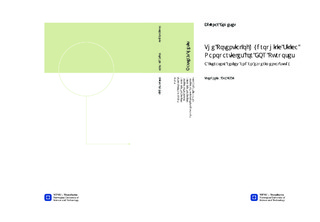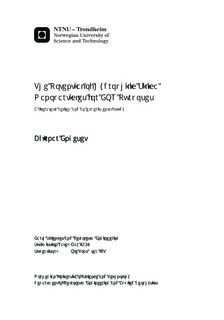| dc.description.abstract | As the world's population is expanding, the global demand for energy will continue to increase. The global demand for all energy will grow by over 50 % the next 25 years. New technology and renewable energy will help us face these challenges, but an essential breakthrough in oil and gas production and exploration is also needed. The most common method for secondary oil recovery is water flooding implemented early during the primary production phase. This is done by forcing water down the injection wells in order to maintain reservoir pressure above bubble point, and to sweep the oil towards the production wells. Micro- and nano- technologies have already proved to be important in technical advances in a variety of industries, and the potential in upstream petroleum industry is great. Nanotechnology will have the ability to improve the industry when it comes to energy supply, by introducing technologies that are more efficient, and more environmental friendly. Many materials, tools and devices with qualities that cannot be matched by conventional technologies can be developed using nanotechnology. In this master's thesis I will look at the unique possibilities of using nanotechnology in oil and gas E&P. The thesis expands my project thesis, where I studied the potential for nanotechnology in exploration, drilling, production and especially enhanced oil recovery. Some believe that nanotechnology has the opportunity to increase the recovery factor up to 10 % in the future. This can be achieved by using for example tailored surfactant that can be added to the reservoir in a more controlled way than existing substances. Other applications could be “smart fluids” and new metering techniques for use in upstream petroleum industry. Experimental studies of the potential of hydrophilic silica nanoparticles have been carried out. Core flood experiments using Berea sandstone were performed to assess the potential in nanoparticle flooding. Permeability impairment was studied by flooding, and clear identification of retention was observed. It showed that concentration, injection volume and rate are important parameters when injecting particles through a porous media. Scanning Electron Microscope (SEM) was applied to detect any residual particles inside the core sample, which could explain permeability impairments. Further, implementations of silica nanofluid as both secondary and tertiary recovery method were tested. The results showed little mobilization when implemented as tertiary recovery method, but a clear reduction of residual oil saturation was observed when applying as secondary recovery method. Using nanoparticles in EOR is currently only tested at laboratory scale, but integrating this in large scale fields could improve the lifetime, recovery and make oil production even more economically beneficial. This thesis summarizes available information within the topic, and performs laboratory experiments in order to study the potential of hydrophilic silica nanoparticles for EOR purposes. | nb_NO |

